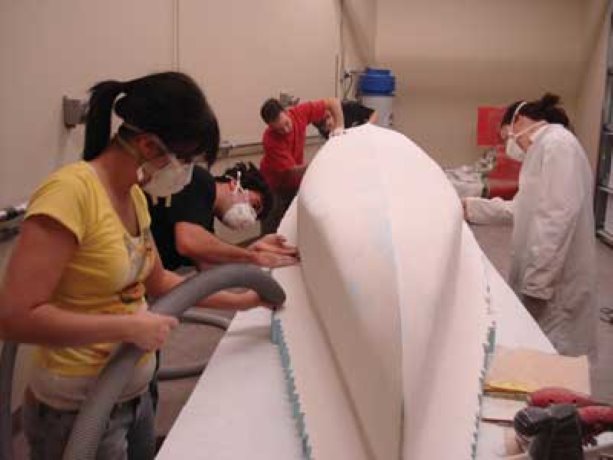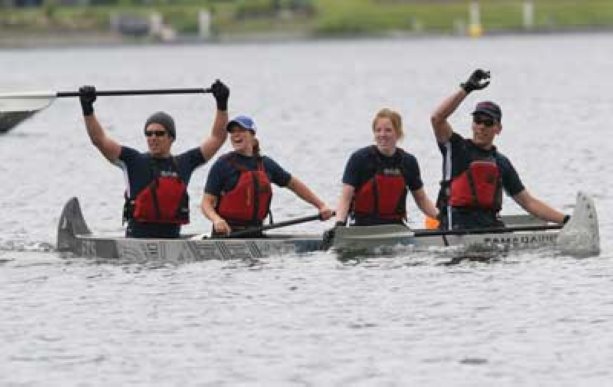Montreal’s École de technologie supérieure’s (ETS) concrete canoe team finished first at both the 2008 Canadian National Concrete Canoe Competition and the American Regional Concrete Canoe Competition.
Concrete. The construction industry shapes and strengthens it daily but chances are using concrete to make a canoe is a rare project requirement.
“The reaction we always get when we say we are going to make a concrete canoe is ‘why?’ and ‘how?’” says Jonathan Remillard, engineering student at Montreal’s École de technologie supérieure (ETS). “Even when we approach people in the construction industry they ask why we are doing it.”
The engineering achievement of concrete canoes being able to float and race on water runs from today until Saturday in Montreal. This is the first year the American Society of Civil Engineers competition is being held outside of the United States and is being hosted by Montreal’s ETS.
“Organizers offered us the opportunity to host the competition — we have a good reputation at the event,” explains Remillard, co-captain of the ETS team. “We always win team spirit awards.”
Throughout the year more than 250 teams of civil engineering students log thousands of hours researching, designing and constructing their concrete canoes. Winners from 18 regional competitions qualify for the national competition.
ETS finished first both at the 2008 Canadian National Concrete Canoe Competition and the American Regional Concrete Canoe Competition.
The ETS canoe, called Toutatis after a Celtic god, weighs 170 pounds and is 20 feet in length. Concrete canoes in the competition can weigh as much as 500 pounds and how they float differs from team to team, says Remillard.
“For us, the trick is in the aggregate we use — some teams put floats in the tips,” explains Remillard. “We use recycled glass beads called Poraver. Our teams focus and research has dealt with playing with polymers. We do not use batching water but mix two types of latex in making our concrete.”
Each canoe must pass a “swamp test” at each competition in which the canoe must float even if it is full of water. The ETS team took eight months to build two canoes and undergo physical training for the event.
“The competition is getting more difficult and we work to get in shape and improve our paddling technique,” explains Remillard. “We use a Dragon Boat racing style and technique. We feel pretty confident we can achieve a top ten result.”
The competition includes both academic and race elements. Each team’s total score is based on the engineering design and construction principles used in making the canoe, a technical design report, a formal business presentation and the performance of the canoe and its paddlers in five different races.
“These are really bright kids and are future industry leaders,” says Scott Rutledge, chair of the Concrete Canoe organizing committee. “There is nothing more difficult than leading a group of volunteers. The students are not in this for money and there is a lot of hard work.”
Rutledge competed in the concrete canoe nationals from 1997 to 2000 while he was a student at Oklahoma State University. The creation of a concrete canoe is like a construction project, from design conception to completion, he says.
“This competition gives the students a leg-up on others. At one competition you have 25 different solutions coming together trying to solve one problem,” says Rutledge.
“Everyone shares that information and they learn.”
The innovation and talent on display at the competition is why large companies such as sponsors BASF, the American Concrete Institute, Baker Concrete Construction and U.S. Silica Company get involved, notes Rutledge.
Today, the teams will have their canoes weighed, measured and judged for aesthetics at Place Du Canada. The “swamp test” and a career fair will also be held. On Friday, June 20, the teams will deliver their academic presentations about their canoe. On Saturday, June 21, the races will begin at 8 a.m. at the Olympic Basin on Notre Dame Island with the sprint race finals between 2 p.m. and 3:30 p.m.












Recent Comments
comments for this post are closed